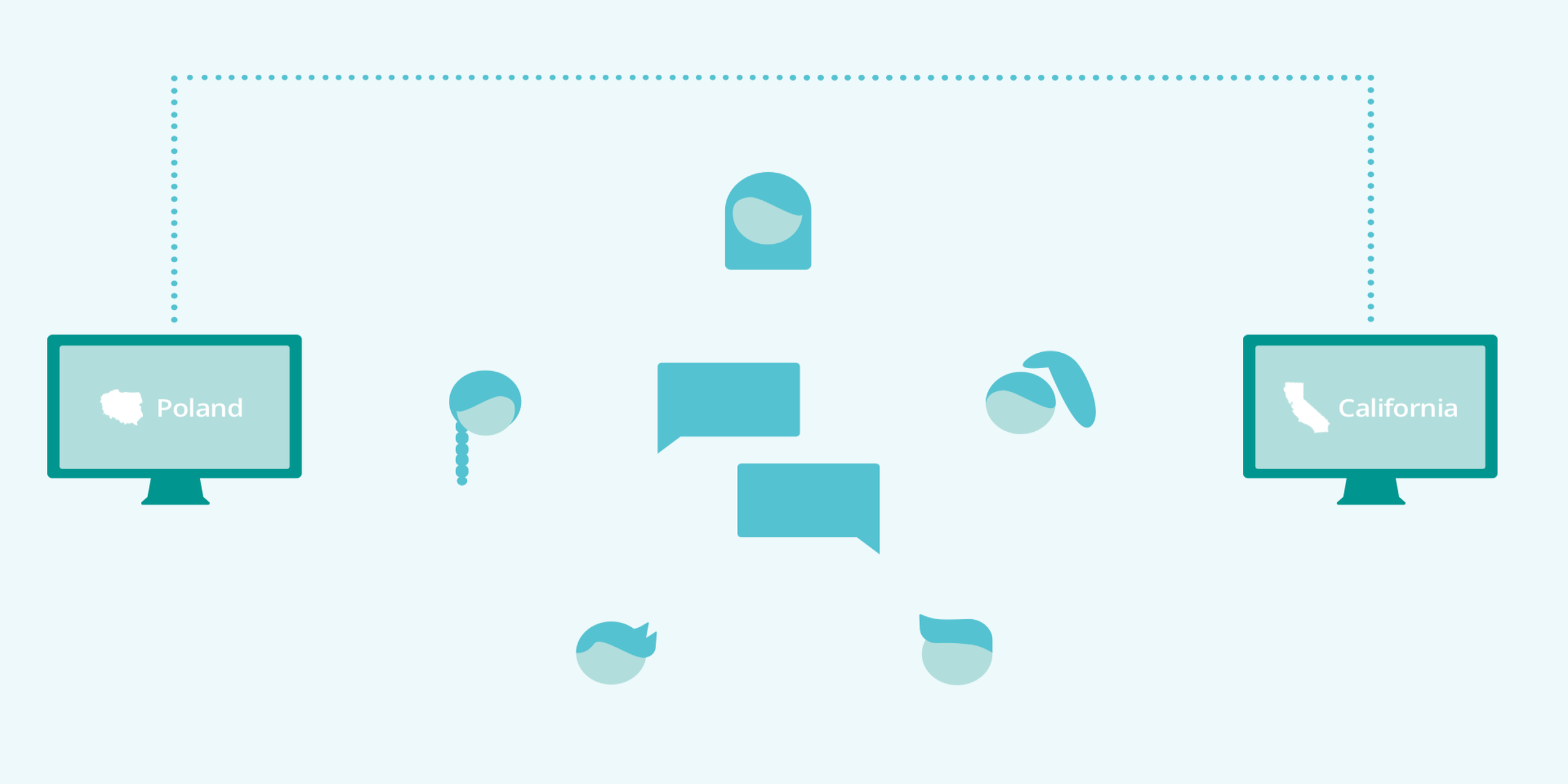
Working Across Countries and Cultures: Top 5 Collaboration Tips
I currently work with a team of designers, half of whom are located in Mountain View, California with the rest living in Poznan, Poland. Having designers in two different places is pretty great. Performing usability testing on people in Europe is much easier for my designers in Poland than it would be for our local members. This is an advantage, given that Egnyte has a diverse, international customer base. Working across these two countries provides us all with a more open perspective.Benefits are often accompanied by obstacles and collaborating across the globe may pose some challenges. Drawing from my personal experience, I’ve got some advice on how to mitigate these hurdles:1. Dealing with different time zonesThis is one of the most common challenges when working internationally. The time difference can range from just a few hours to a complete swap of day and night. This can impact the flow of collaboration as time differences can affect meetings, digital response time, and communication efficiency.
- Space out the times you allot for email correspondence to alleviate some anxiety. You may also receive messages at inconvenient hours. This can impact your work life balance, so try to avoid demanding immediate responses.
- Plan ahead. For example, if you want feedback on design iterations, send them out earlier than you think you should. Take into account the time difference and note that this equates to delayed response time. The time difference between our two teams is 8 hours, so we know we have at least 8 hours before we receive any response from our Polish teammates. If they get swamped with work that next day, we’ll have to be patient and wait even longer.
- If your team does not have overlapping working hours, discuss and agree on how you can still work effectively together. My team works primarily through email and Google Drive and we ping each other for quick questions or comments. We try to limit the amount of face time required because of the time difference, but we are also adaptable enough to meet when it’s urgent.
2. Deciding meeting logisticsOrganizing meetings across different time zones can be a hassle. The time difference could be so large that few hours work equally for everyone. Compromises will need to be made.
- Set your calendar up to show all the necessary time zones. Google mail has an extension to help with this. You can do it the old-fashioned way too and print out a time zone converter sheet.
- Be flexible: figure out what works best for the team. For example, are most teammates “morning people” or “night people?” Find meeting times that are acceptable for all sides and be sensitive to office hours. If you aren’t able to decide on times that work for everyone, consider alternating times each week.
- Check your tech. Our team usually uses Google Hangout or Zoom and we always include the meeting link in its calendar event. We also use a Jabra speaker to ensure consistent sound quality. Make sure you have a stable connection as technical problems are a common source of disruption for virtual meetings. Use the best collaboration tools to optimize team productivity to promote the best environment for progress.
3. Communicate. Communicate. Communicate!Communication is the one thing that can make or break your team. Without clear communication, productivity dissolves. This can be tough in any workplace and is especially tough for teams working across countries.
- Use the channels that work best for your team. If the time difference is too large for instant messaging to work effectively, consider using a less time-sensitive tool like email. Once everyone agrees on how to communicate, energy can be spent on what to communicate.
- When in doubt, over-communicate. You may have to spend extra time clarifying your thoughts and asking questions. If you’re not sure about something, just ask. I would rather ask too many questions than work on something I’m unsure about. This also helps develop patience, which is always helpful.
4. Understanding cultural differences
- Be culturally aware. Our company participated in a workshop on cultural differences between the US and Poland. This helped employees on both sides better understand our differences and set realistic expectations.
- There may be some general cultural characteristics to keep in mind. Don’t typecast or stereotype your teammates. Instead, keep an open mind when someone acts in a way that is different from what you’re used to. For example, our Polish counterparts are more open and use straightforward language, while we like to make small talk and are more “polite.” Talk through your differences so you can hear the explanations and rationale behind why someone acts the way they do.
- English (or whatever language you speak) may not be their first language so they may phrase things in a way that is difficult to understand. Accents vary and I have found that clear enunciation and articulation helps with better understanding all around. The more you get used to listening to a particular accent, the better you will be at discerning what is being said.
5. Getting to know each otherThis is inherently more difficult when you have only met virtually. There can be a barrier in the beginning, especially if some teammates aren’t as open or social as others. The time you spend together may feel awkward when you’re first getting to know one another.
- Turn on the webcam during meetings so you can see facial expressions and body language in addition to hearing voices. This helps everyone develop a better understanding of what someone is saying because nonverbal communication provides much-supporting information.
- Plan an annual team trip. If you have a budget allowance, this may be a great way for team members to meet in person. Designers don’t work in silos. It’s beneficial to meet the product managers, developers, and engineering managers we work with.
- Create a space in which people are encouraged to share personal information. The information being shared can range from weekend plans, good news, or personal projects and hobbies. This space can even be a virtual one like a “random” channel in Slack or small talk time built into the beginning or end of a meeting.
Despite having some challenges, it is beneficial to work with teams that span two or more countries. Working across countries expands your skill set and helps you develop an understanding you might not otherwise have the chance to. From this experience, you may begin empathizing with others in a similar situation. You may also get an inside look into how your counterparts operate. Hint: Super insightful for your job!





